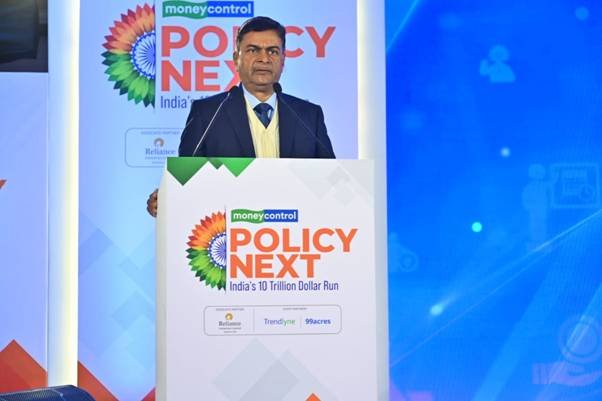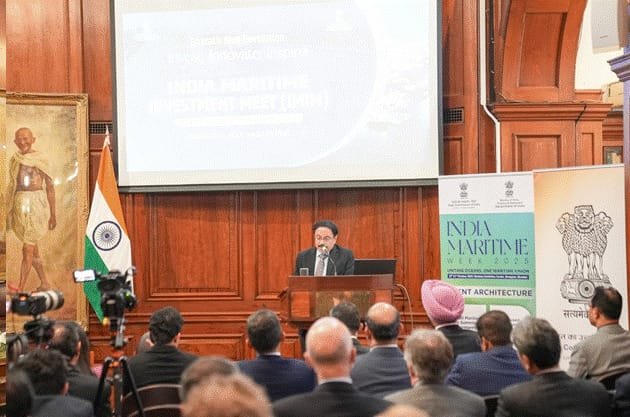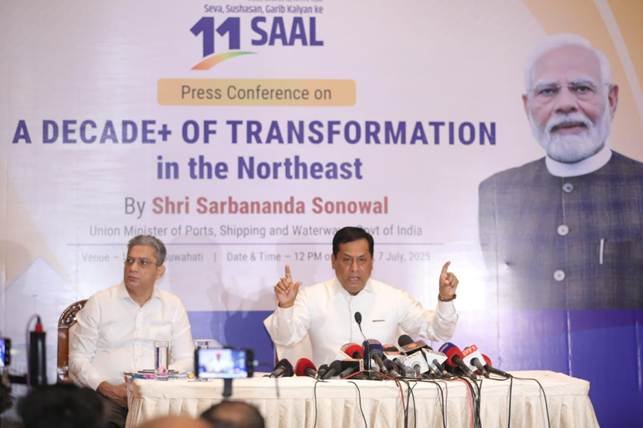Rs.17.5 lakh crore power capacity is currently under construction
India’s peak electricity demand is likely to cross 400 GW by 2030, indicating the fast growth of the economy, says Power and New & Renewable Energy Minister R. K. Singh.
Power demand grew at 9% last year, and is growing at 10% this year, said Singh, adding that daily basis demand grows by 8 GW – 10 GW more than the same day previous year.
“There is no other market as big and growing as fast as us,” said Singh, assuring that enough capacity will be added to meet this burgeoning demand.
“We will cross 500 GW of renewable capacity by 2030. We already have 7 million tonnes of green hydrogen manufacturing lined up.”
He informed that Rs.17.5 lakh crore power capacity is currently under construction while Rs.17 lakh crore has been invested in the sector in nine years.
“We have about 99 GW of renewable energy capacity under construction and around 32 GW of renewables under bidding stage. We shall be bidding around 40 – 50 GW of renewable capacity every year, he said at the Moneycontrol’s Policy Next Summit in New Delhi, on 18 Jan 2024.
“In thermal capacity, we have about 27 GW under construction, we have bid out additional 12 GW, 21 GW more under survey and investigation and a further 22 GW under initial stages. We have 47 GW of hydro capacity installed, 18 GW under construction and 13 GW under various stages of survey and investigation.”
Speaking about the rising power demand, the Minister informed that in 2014, the peak demand was around 130 GW while today it is in the region of 243 GW.
Acknowledging that no economy can develop if it does not have sufficient power, he informed that power shortage in India has come down from around 4.5% in 2014 to less than 1% today.
“We have ensured universal electricity access, connecting 29 million homes in 19 months, which the International Energy Agency called the largest and fastest expansion of energy access in the history of the power sector.”
Singh also laid down the details of the power capacity addition and strengthening of the electricity distribution system.
“We added about 194 GW of power capacity, out of which around 107 GW is renewables. We constructed 193,0000 circuit km of transmission lines, which connected the whole country into one grid on one frequency, making it the largest integrated grid in the world.
“We increased the power transfer capacity from 36 GW to 117 GW today. We added 3,000 substations, upgraded 4000 substations, added about 5.5 lakh circuit km. of LT lines, 2.5 lakh circuit km. of HT lines, about 7.5 lakh transformers and sundry other equipment.”
“Days of generators are gone. We have Rules which say that 24×7 power is now a right, no discom can do gratuitous loadshedding; if they do that, they will have to pay penalties and consumers will get compensation,” he warned.
The Minister pointed out that India has also emerged as a country which is at the forefront of energy transition. “Our rate of renewable capacity addition has been one of the fastest.
“We have 187 GW of renewable capacity. We had pledged that we will have 40% of our capacity from non-fossil-fuels by 2030, and today, we have 44% of our capacity from non-fossil-fuel sources.
“We have now upped our target and while we have pledged to have 50% of our capacity from non-fossil-fuel sources by 2030, we shall have 65% of our capacity from non-fossil-sources by 2030.”
He pointed out that India is the most competitive in renewable energy since the cost of renewable energy is the cheapest in the world, despite subsidies and protectionist measures being adopted by some countries.
“We are adding energy storage capacity too. We have about 35 GW of Pumped Storage Projects capacity lined up. We are constructing battery storage capacity as well, though it is expensive at present. Unless we have volumes, the price will not come down.”
The Minister said that the government is coming out with a Production Linked Incentive Scheme for grid-scale storage which will further bring down the price of storage.
“Due to interventions such as custom duties on solar modules and cells as well as Approved List of Models and Manufacturers, the net result has been that the capacity of module manufacturing has gone up from about 20 GW to about 50 GW now; by 2030, we will have about 24 GW of polysilicon to module manufacturing capacity.”
He continued, “While we are a leader in manufacturing of wind power equipment, there is a need to domestically manufacture wind turbines of larger capacity.
“I have told manufacturers that there will come a time when I am going to say that I will not accept any turbine of less than, let us say 5 MW.”
He added that he wants entrepreneurs to enter the field of HVDC Transmission lines.
“The manufacturing capacity of thermal equipment such as boilers and steam turbines has come down, since the world thought that India is moving away from thermal capacity addition since the nation is adding so much of capacity.”
Singh added that this capacity needs to be augmented. Fiinews.com










